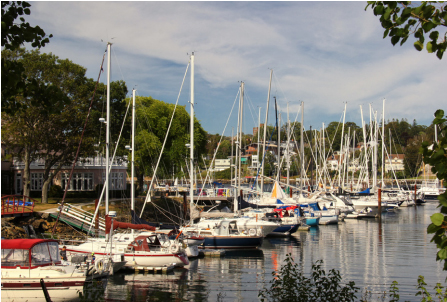Eastern Shore, Nova Scotia: About the Area – An Outdoor Enthusiasts Paradise
Stretching from the edges of the Halifax Metro region to the Canso Causeway, Nova Scotia’s Eastern Shore is a place where historically themed attractions, outdoor activities, comforting cuisine, and a natural paradise come together to create a one-of-a-kind travel experience. Outdoor enthusiasts will love this region. From Martinique Beach, Nova Scotia’s longest sandy beach, to Lawrencetown Beach, a popular year-round hot spot for surfing, this is the perfect destination for swimming, surfing, sea kayaking, or taking part in the annual sandcastle competition at Clam Harbour Beach Provincial Park. The seaside setting is home to numerous bird species, including eider ducks, great blue herons, Atlantic puffins, plovers, and sandpipers, making it a must-visit destination for birding enthusiasts. Hikers and cyclists will find numerous multi-use and wilderness trails to enjoy.
You can step into Nova Scotia’s past at one of the region’s living-history museums – the enduring, authentic late 1800s setting of Sherbrooke Village, or Memory Lane Heritage Village’s depiction of the province’s rural industries in the 1940s, including gold mining. See how a fisherman supported a family of fifteen in the tiny homestead that is now the Fisherman’s Life Museum in Oyster Pond.
The Eastern Shore is the ideal getaway for people looking to escape the urban way.
Eastern Shore Attractions:
Memory Lane Heritage Village, Lake Charlotte
Sherbrook Village
Port Bickerton Lighthouse, Port Bickerton
Fisherman’s Life Museum, Jeddore Oyster Pond
Lawrencetown Beach
Taylor Head Provincial Park
Clam Harbour Provincial Park
Coastal Adventures, Tangier
Area Schools:
Jeddore Lakeville School
Oyster Pond Academy
Lakefront Consolidated
Elementary
Eastern Shore District High























